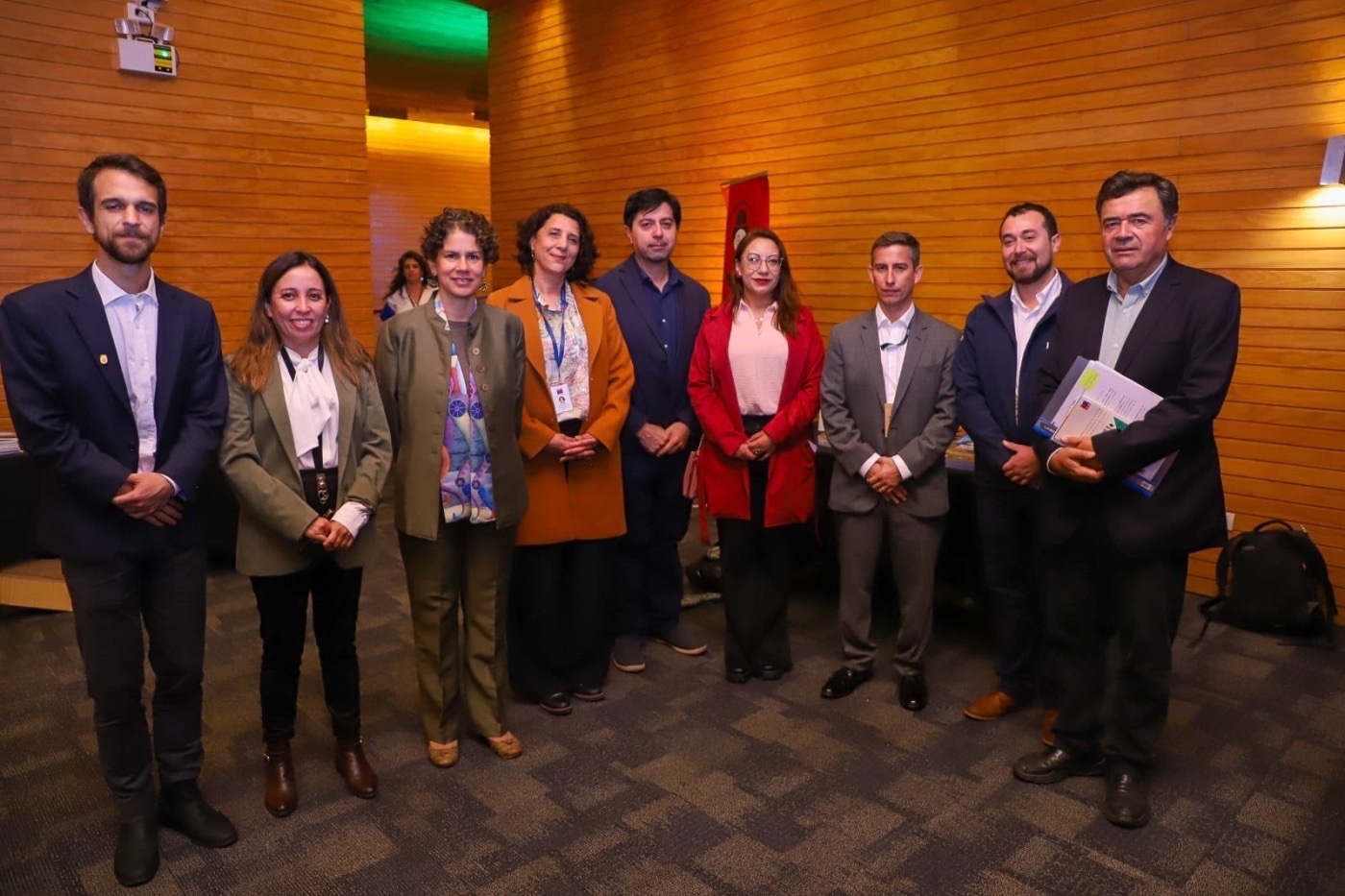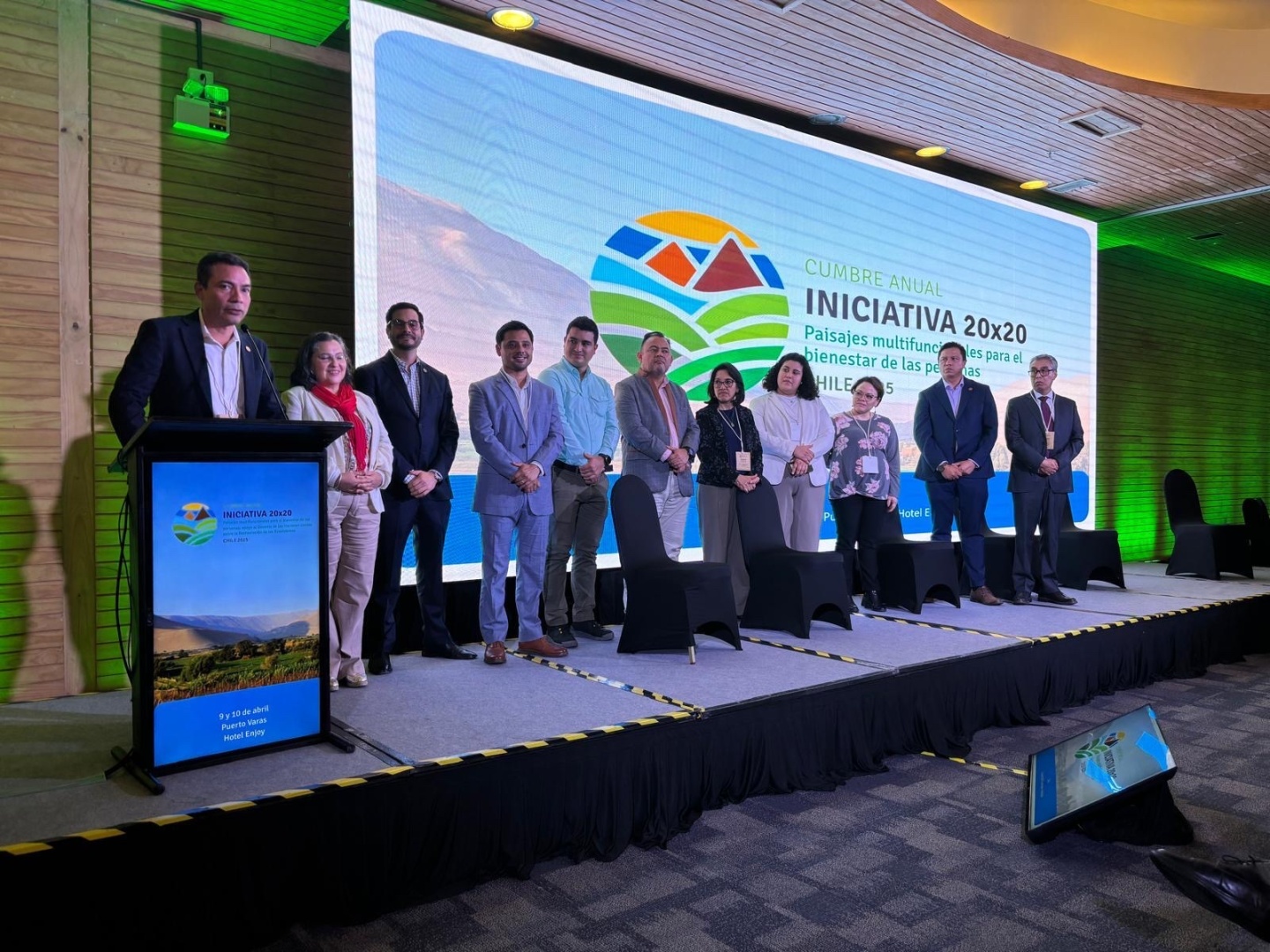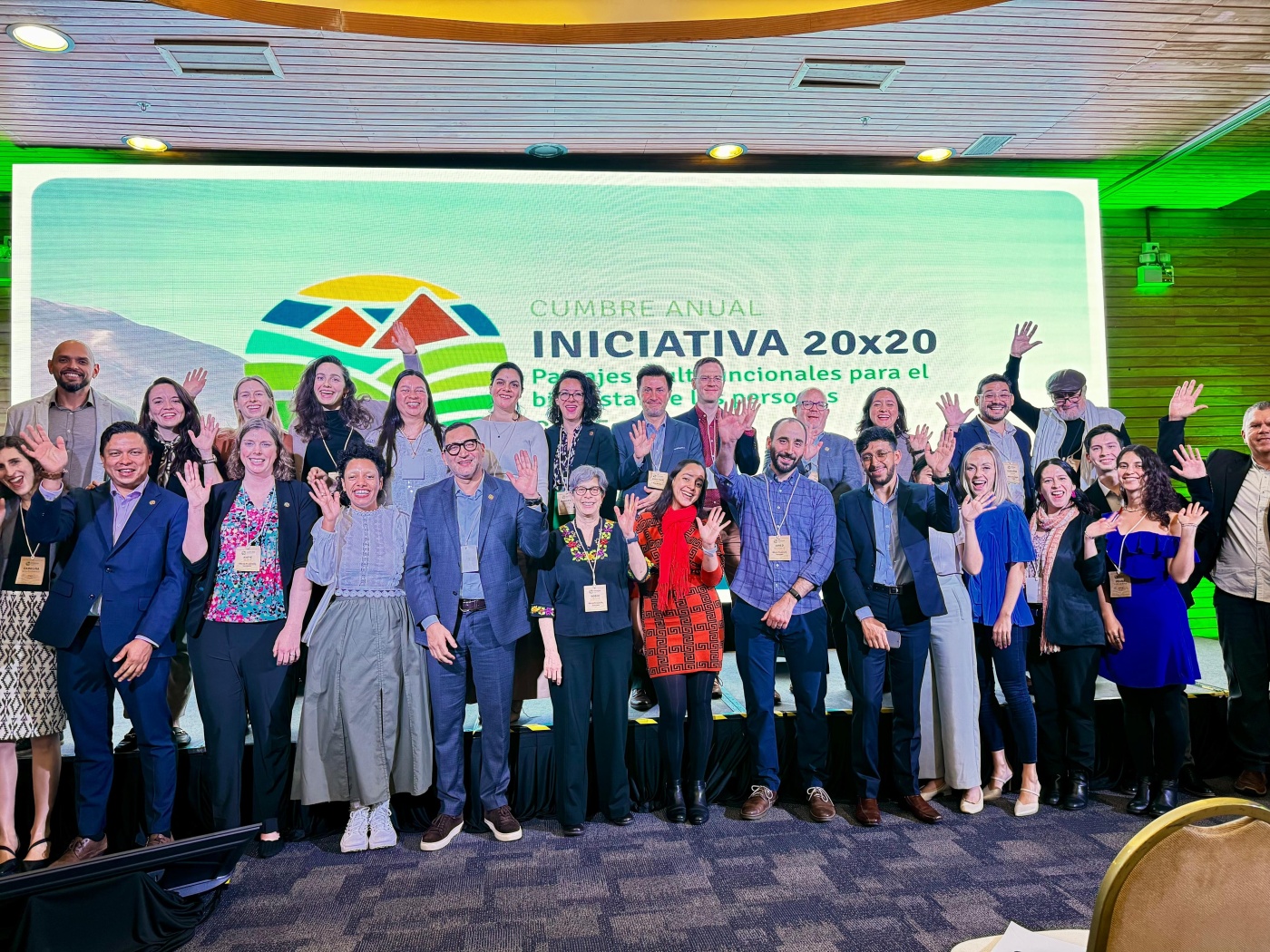Against the stunning backdrop of southern Chile's lakes, more than 180 people gathered in Puerto Varas on April 9-10, 2025, for the Initiative 20x20 Annual Partners Meeting. Representatives from governments, technical organizations, indigenous peoples, youth groups, the private sector, and financial institutions came together to renew commitments, share lessons learned, and collectively chart a roadmap toward 2030 that will accelerate landscape restoration across Latin America and the Caribbean.
Organized by the World Resources Institute (WRI), the Initiative's technical secretariat, alongside the Government of Chile, the Annual Meeting provided a space for strategic reflection and regional coordination. This event marked a pivotal moment — not only with the official unveiling of the Puerto Varas Declaration and the Initiative's new 2030 strategy, but also through meaningful debates that connected restoration, equity, financing, and conservation under a unified vision for action.
What follows are the key milestones, insights, and commitments that defined these two intensive days of collaboration among partners and institutions, whose work has directly benefited more than one million people via restoration projects throughout the Initiative's lifetime.

Chilean National Authorities present at the 2025 Annual Partners Meeting.
Day 1: New commitments, lessons learned from the past, and cross-sector collaboration
A call from Chile for intersectoral restoration. At the official opening, Ministers Esteban Valenzuela (Agriculture) and Maisa Rojas (Environment) called for the development of interministerial public policies, the use of funds from extractive sectors to promote restoration, and the institutionalization of efforts such as the Biodiversity and Protected Areas Service. This integrative vision set the tone for cooperation that continued throughout the Summit.
Chile's National Restoration Plan: A model of coordination. Daniela Manusevich and Constanza Troppa presented Chile's National Landscape Restoration Plan, a joint initiative led by the country's Ministries of Agriculture and Environment. The plan prioritizes ecosystem recovery systems that deliver both social and environmental benefits while integrating science, culture, and community participation. It served as a concrete example of how different sectors can forge a shared vision for restoration.
Unveiling the Initiative 20x20's new strategy. One of the day's most significant moments was the official presentation of the Initiative's 2030 strategy. FAO’s Andrea Romero and WRI’s René Zamora, and Natalia Ruiz-Guevara outlined how this roadmap was collaboratively developed with input from over 60 stakeholders across the region. The new vision centers on four strategic pillars: public policy, knowledge management, private financing, and gender and social equity.
Ministerial cooperation to unlock finance. Officials from Chile, Colombia, Peru, Honduras, Brazil, Mexico, and Guatemala explored ways to strengthen inter-ministerial coordination, ensure local-level technical assistance, and establish state policies that outlast electoral cycles. They emphasized the importance of using public funds to leverage private investment and embedding restoration within broader development plans.
El Salvador as a regional exemplar. Karla Posada from the country's Ministry of Environment showcased policy advances in restoration that link economic incentives with food security and spatial prioritization mapping. Her presentation highlighted coordination with El Salvador’s Ministry of Agriculture and the development of cross-sector instruments as critical success factors.
Restoration as the nexus of the Rio Conventions. Representatives from WWF, FAO, WRI, and UNCCD explored how restoration can serve as the connecting thread between the conventions on desertification, biodiversity, and climate change. They spotlighted the global target of restoring 600 million hectares and the Initiative 20x20's coordinating role in advancing this objective.
Restoration and conservation: a necessary partnership. Panelists from Mexico, Peru, Argentina, and Brazil shared experiences that integrate restoration and conservation, demonstrating that it is possible to generate ecological and social impacts when there is science-based planning, community participation, and financial sustainability.
Standout initiatives and action networks. The first day concluded with presentations of coordinated efforts including the Mexican Restoration Alliance (AMERE), the Central American Dry Corridor Network, and the Assisted Natural Regeneration Alliance — illustrating how collaboration between technical and political actors can scale best practices across the region.
Day 2: Inclusion, monitoring, and finance: keys to scaling up restoration
Equity as a strategic pillar. WRI’s Natalia Ruiz-Guevara presented the Initiative's gender and social equity strategy, and María Inés Miranda from Wise Women Chile shared findings from a study on women in restoration. They addressed topics such as intersectionality, local governance, and the care economy, delivering the clear message that restoration must also transform power dynamics.
Youth leading restoration from the ground up. An intergenerational panel featured young voices from Colombia, Guatemala, Chile, and Brazil, who described how they're blending ancestral knowledge, science, and technology to create sustainable landscapes. The Latin American Model Forest Network also presented advances in including youth in decision-making processes.
Beyond forests: Restoring critical ecosystems. The restoration of wetlands, high-altitude moors, and grasslands was highlighted as an urgent priority. Speakers emphasized their importance for water and food security and the need to integrate them into public policies and financing mechanisms.
Moving forward with monitoring. FAO, WRI, and other regional partners introduced monitoring tools like FERM and AURORA, which are designed to track restoration progress. Discussions addressed key challenges including operability between platforms, local validation, and harmonization across indicators.
Restoration in the face of climate change. Panelists highlighted the role of restoration in adapting to extreme weather events, with case studies showing how restoration has strengthened resilience against fires, droughts, and natural disasters.
Data-driven decision making. WRI’s Katie Reytar presented an analysis of tree cover across 18 Latin American countries from 2015-2023, revealing patterns of loss, gain, and stable coverage. The study reinforced the importance of combining satellite data with local knowledge.
Scaling up private finance. A panel moderated by IUCN explored diverse approaches for transitioning from pilot projects to meaningful impact in restoration financing. Key topics included risk reduction, viable business models, and improved communication strategies with the investment community.
Assisted natural regeneration: An overlooked opportunity. Robin Chazdon highlighted the potential of assisted natural regeneration throughout Latin America, calling for a shift away from the dominant tree-planting narrative toward strengthening community management of secondary forests.
Looking ahead. The Annual Meeting concluded with two major announcements: first, Guatemala will host the next Annual Meeting in 2026; and second, Alejandra Laina was officially named the new director of Initiative 20x20, succeeding René Zamora, who received a heartfelt tribute recognizing his leadership and vision.

Photo: The Guatemalan delegation gathers to announce its commitment as country host of the 2026 Annual Meeting.
Our Shared Journey Toward 2030
The 2025 Annual Meeting crystallized a unified vision: restoration isn't merely an environmental objective, but also a comprehensive development strategy. With a clear roadmap, four strategic pillars, and an active network of partners, Initiative 20x20 enters a new phase demanding ambition, collaboration, and coherence.
The path to 2030 is now charted. Achieving resilient, healthy, and equitable landscapes will only be possible if we move forward together, with bold decisions, enabling policies, and communities at the heart of transformation, united by restoration as our common path forward.
